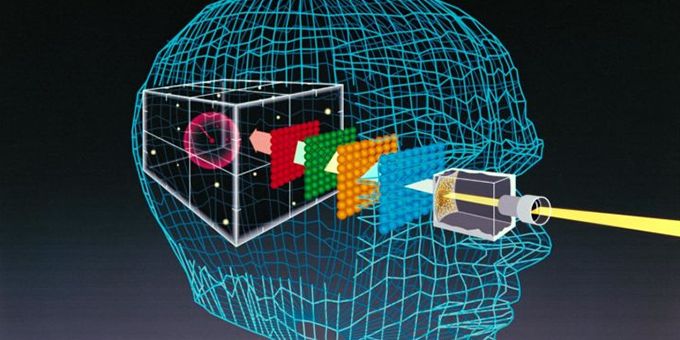A comparison of leading robotic vision technologies in 2025
Exploring the Role of an Optical Fibre Diameter Analyser in Ensuring Item High Quality
The duty of an optical fibre diameter analyser is critical in maintaining product high quality within the telecom market. These devices step fibre diameter with accuracy, making certain uniformity and performance. Variations in diameter can bring about considerable signal loss, affecting communication integrity. As suppliers go for quality, recognizing the systems behind these analysers comes to be crucial. What developments lie in advance in this field, and just how will they form the future of optical fibre production?
Comprehending Optical Fibre Diameter Dimension
Determining the diameter of optical fibres is a vital process in assuring the efficiency and integrity of fibre optic systems. Exact measurement is vital, as variants in diameter can greatly influence signal transmission and general system performance. The measurement process normally utilizes innovative tools and strategies, such as laser micrometers or optical fibre diameter analysers, which provide specific, real-time data.These devices can evaluate fibres' diameters with extreme accuracy, typically to micrometre levels. This precision aids determine prospective defects or inconsistencies in the production procedure. In addition, comprehending the diameter measurement includes acknowledging the value of aspects such as temperature, stress, and material residential or commercial properties, which can affect the last dimensions. By keeping strict measurement procedures, manufacturers can ensure that the optical fibres satisfy industry standards and specs, inevitably adding to the long life and effectiveness of fibre optic networks.
The Significance of Consistency in Optical Fibre Manufacturing
Uniformity in optical fibre production is essential for guaranteeing accuracy in producing procedures. Variants in diameter can considerably affect efficiency metrics, influencing the total top quality and dependability of the fibre. Standardization and top quality control measures are crucial to preserve harmony and enhance item efficiency.
Precision in Production Processes

Influence on Performance Metrics
Making sure harmony in optical fibre diameter significantly influences performance metrics across various applications. Consistent diameter causes suitable light transmission, reducing signal loss and improving overall performance. When fibres preserve a common dimension, the possibility of problems diminishes, boosting integrity in telecommunications and data transfer (fibre testing equipment). Additionally, consistent sizes help with less complicated combination into existing systems, lessening compatibility issues. Variants in diameter can create changes in attenuation and diffusion, negatively impacting performance. By using an optical fibre diameter analyser, producers can closely check and change manufacturing procedures, cultivating a greater degree of uniformity. This uniformity not only boosts the top quality of the end product but likewise enhances customer satisfaction, verifying vital for keeping competitive advantage in the optical fibre market
Standardization and Quality Assurance

Just How Optical Fibre Diameter Analysers Job
Optical fibre diameter analysers run via a mix of light transmission and sophisticated measurement strategies to precisely evaluate the diameter of optical fibres. These devices make use of a laser or LED light that releases a beam of light guided at the fibre on trial. As light communicates with the fibre, it is refracted and scattered, enabling accurate measurements.The analyser webpage records the light using a high-resolution electronic camera or photodetector, which converts the optical signals right into electric signals. Advanced formulas after that refine these signals, calculating the diameter based on the intensity and distribution of the light.The system typically consists of calibration attributes to guarantee accuracy, employing recognized standards to validate dimensions. By constantly keeping an eye on the fibre diameter, these analysers help maintain conformity with sector standards and specs, assuring regular item high quality. Improved automation in contemporary analysers better simplifies the procedure, promoting real-time analysis for makers.
Influence On Signal Integrity and Communication Dependability
A constant and exact optical fibre diameter is essential for maintaining signal integrity and interaction dependability in fibre optic networks. Variants in diameter can result in enhanced light loss, causing abject signal quality and lowered transmission distances. When fibres are not consistent, concerns such as modal dispersion and attenuation may emerge, which can misshape the information being sent and result in mistakes in communication.Furthermore, irregularities in fibre diameter can affect the efficiency of adapters and splicing, leading to additional signal deterioration. This variance can jeopardize the total integrity of network systems, affecting every little thing from net rate to telecommunication clearness.
Enhancing Production Efficiency With Advanced Innovation
Keeping consistent fibre diameter is vital for ensuring dependable interaction systems. Advanced modern technology, particularly the optical fibre diameter analyser, plays an essential duty in enhancing making performance. By supplying real-time measurements and precise data relating to fibre sizes, this innovation enables suppliers to swiftly recognize discrepancies from needed specs. Subsequently, manufacturing procedures can be adjusted quickly, decreasing waste and minimizing downtime.The combination of automated systems improves quality control, enabling constant surveillance throughout the production procedure. This not only speeds up manufacturing however also boosts overall product high quality, causing less flaws. Furthermore, progressed analytics enable manufacturers to optimize their procedures based upon empirical data, helping with constant enhancement. Consequently, the optical fibre diameter analyser adds substantially to decreasing functional prices and raising throughput, eventually promoting a much more affordable edge on the market. By accepting these improvements, makers can ensure their items fulfill the highest standards of top quality and integrity.
Future Trends in Optical Fibre Quality Assurance
As the optical fibre industry develops, future fads in quality control will plainly feature advances in measurement innovation. These innovations will enable much more specific evaluations of fibre diameter, improving total item stability. Additionally, the assimilation of automated high quality control systems assures to improve processes and improve uniformity in production.
Advances in Dimension Innovation
With the constant development of optical fibre modern technology, the demand for precise measurement devices is extra important than ever before. Current breakthroughs in measurement modern technology have brought about the growth of advanced optical fibre diameter analysers that use high-resolution imaging and laser-based methods. These developments make it possible for producers to achieve better accuracy and repeatability in diameter measurements, important for maintaining rigid high quality standards. Furthermore, the combination of fabricated knowledge and artificial intelligence formulas enhances data evaluation, permitting for real-time changes throughout production processes. As the sector embraces these technical developments, they assure to enhance effectiveness, decrease waste, and guarantee the reliability of optical fibres in different applications, eventually supporting the growing demand for high-performance interactions framework.

Automated High Quality Control Solution
While the optical fibre market remains to development, the implementation of automated quality assurance systems is positioned to revolutionize quality assurance processes. These systems use advanced algorithms and real-time information analysis to keep track of fibre diameter and various other essential specifications with unrivaled precision. By integrating optical fibre diameter analysers with automated systems, suppliers can detect inconsistencies from specs instantaneously, minimizing the danger of defects. In addition, automation reduces human error, improves consistency, and accelerates production timelines. As her comment is here industries increasingly adopt Market 4.0 principles, the role of computerized quality assurance systems will certainly expand, promoting a seamless connection in between production and quality control. This shift not just guarantees greater item high quality however likewise cultivates innovation and performance throughout the manufacturing procedure.
Frequently Asked Questions
What Variables Influence the Optical Fibre Diameter Dimension Accuracy?
Elements affecting optical fibre diameter measurement precision include ecological problems, calibration of measurement devices, driver method, the sensitivity of the determining device, and the physical residential properties of the fibre itself, such as material composition and surface irregularities. (optical fibre diameter analyser)
Exactly How Typically Should Optical Fibre Diameter Analysers Be Adjusted?
Calibration frequency for optical fibre diameter analysers typically depends on usage intensity and manufacturer suggestions. Regular checks, usually month-to-month or quarterly, guarantee measurement accuracy and integrity, thereby maintaining the stability of the production process.
Can Environmental Conditions Influence Dimension Outcomes?
Environmental problems can significantly influence measurement outcomes. Factors such as temperature level, moisture, and atmospheric pressure may impact the efficiency of measurement instruments, possibly leading Your Domain Name to mistakes in the results acquired from optical fibre diameter evaluation.
What Are the Common Kinds of Optical Fibre Diameter Analysers?

How Do I Choose the Right Analyser for My Manufacturing Needs?
Selecting the best analyser includes reviewing production needs, consisting of fibre type, diameter array, and measurement precision. Furthermore, checking out the analyser's calibration, compatibility with existing devices, and interface can significantly affect the decision-making process.